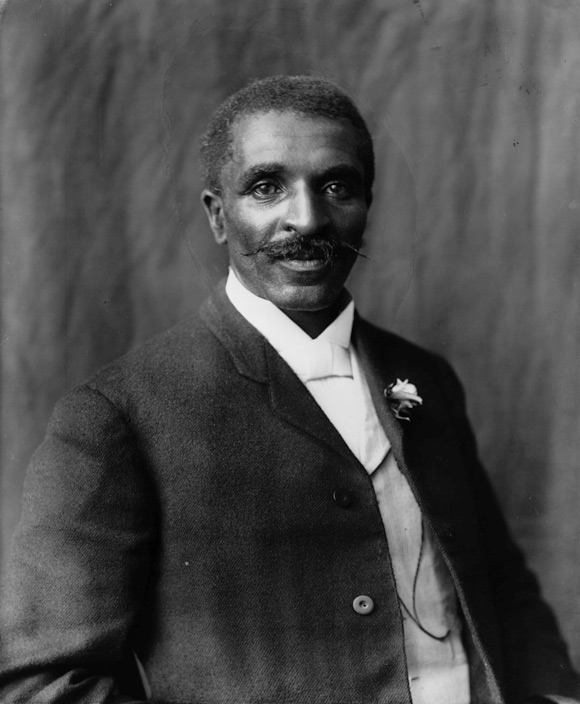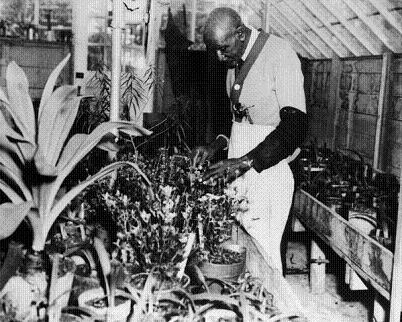
Thinking broadly: George Washington Carver, 1906
What are the possible uses of hip-hop, all of them?
How many kinds of tasks can it do? It what kinds of ways might it be used, in order to help people better understand themselves and/or each other?
This question is, to me, the most important, yet least-addressed, as it pertains to hip-hop and its future. It’s also the one on which I’m focusing, assisted by a talented rapper and educator, during my WBAI-NY / 99.5 FM radio show, NONFICTION, this afternoon, Friday, June 20, 2 pm ET.
Put another way, what’s hip-hop good for? We mostly use it for CDs, films, dance music, and other entertainment purposes. But is that it? In my two decades covering the form, it’s the question that has most compelled me, and the one that has most frustrated me, also.
In a certain sense, it’s akin to the question that scientist George Washington Carver, above, addressed in the mid-19th century, when he took the ignoble peanut, and, essentially, Coltraned it. He played every possible chord on the melody we call peanut, producing over 300 applications from the legume.
 Carver could have said, “You chew ’em. What kind of question is that?”, to the query, “What are peanuts good for?” He good have been embarrassed into inactivity by people, stopping at his lab to ask, “Still on those peanuts, eh?”, with a smirk.
Carver could have said, “You chew ’em. What kind of question is that?”, to the query, “What are peanuts good for?” He good have been embarrassed into inactivity by people, stopping at his lab to ask, “Still on those peanuts, eh?”, with a smirk.
But he didn’t. He sent his mind in far-reaching, unanticipated directions, in order to fashion everything from beverages, cosmetics, and paints, to food analogs, medicines, and other tools from the plant.
I’m always excited when I come across people who are crafting new ways to think about hip-hop, people who, like Carver, see other connections between hip-hop and the varied activities of people than those commonly assumed.
 That’s why I was so glad to meet Baba Brinkman, right, last year, creator of “The Rap Canterbury Tales,” a project that rethinks the work of poet Geoffrey Chaucer through the aesthetics of hip-hop.
That’s why I was so glad to meet Baba Brinkman, right, last year, creator of “The Rap Canterbury Tales,” a project that rethinks the work of poet Geoffrey Chaucer through the aesthetics of hip-hop.
In a series of thoughtful papers, this youthful scholar/practitioner reasons gently with the culture, in order to tease out its core ideas. In the preface to his book, Brinkman says he created the project
to resurrect Chaucer’s brilliant stories from their vellum mausoleum by giving them a new form that would once again delight and edify live listening audiences, while at the same time redeeming hip-hop in the eyes of my parents’ generation.
We’ll rebroadcast our conversation about his book and CD on NONFICTION, WBAI-NY / 99.5 FM, today at 2 pm ET.
If you’re outside of the New York tri-state, you can check out our stream on the web. If you miss the live show, check out our archive for up to two weeks after broadcast.

3 comments ↓
this dazja george washington carver is great
this dazja george washington carver is great
george washington carver is amazing in an amazing way=)
Leave a Comment